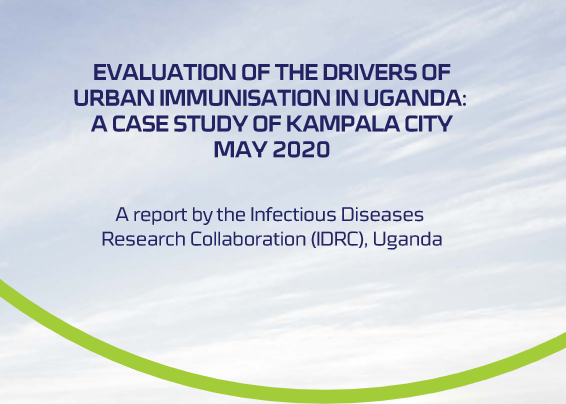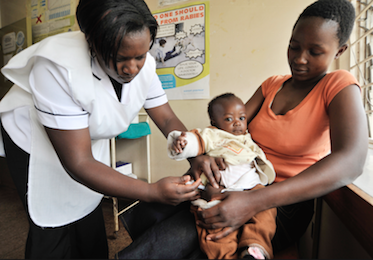

Uganda has a poor vaccination coverage coupled with inequalities in coverage and continuous occurrence of vaccine preventable disease outbreaks. Moreover, there is a dearth of evidence about the drivers of immunization service delivery in urban settings in Uganda, and their variance from those in rural settings. The Infectious Diseases Research Collaboration (IDRC) evaluated the drivers of urban immunization to assess the current immunization strategy and propose a new approach. Specifically, the evaluation was designed determining the effectiveness of the current Uganda Expanded Programme on Immunization (EPI) immunization service delivery model in Kampala city and found that:
- The access to immunization is high because the DPT1 coverage is 96% however there is a dropout rate from DPT1 to DPT3 is 17.3% presenting shrinkage in utilization over time.
- The full immunization coverage is 41.4% and is lowest among children of caregivers of low socioeconomic status but uniformly distributed between formal and informal settlements and 26.5% of the fully vaccinated children received all vaccines on time.
- Public and private facilities provide immunization services vaccinating almost half of the children in Kampala.
- Caregivers fully vaccinate their children after observing the appreciation of the immunization benefits
- Limited information, vaccine stock outs, delays, competing priorities and perceived marginalization of refugees were highlighted as the main barriers to vaccination.
- The major health system barrier was lack of a follow up system for immunization to identify and trace defaulters.
- Lastly, the EPI model has not sufficiently adapted to the challenges of immunization in an urban setting.
With the findings above, the mixed methods evaluation recommended that there is need for electronic registries in the urban settings to improve coverage data, track defaulters or children without immunization cards. Finally, this evaluation raised issues for further study including: a) the MOH/UNEPI should evaluate why some divisions perform better than others, and b) this evaluation should be complemented with a more detailed study of the supply side drivers of immunization coverage in Kampala city. Read the entire report here.
